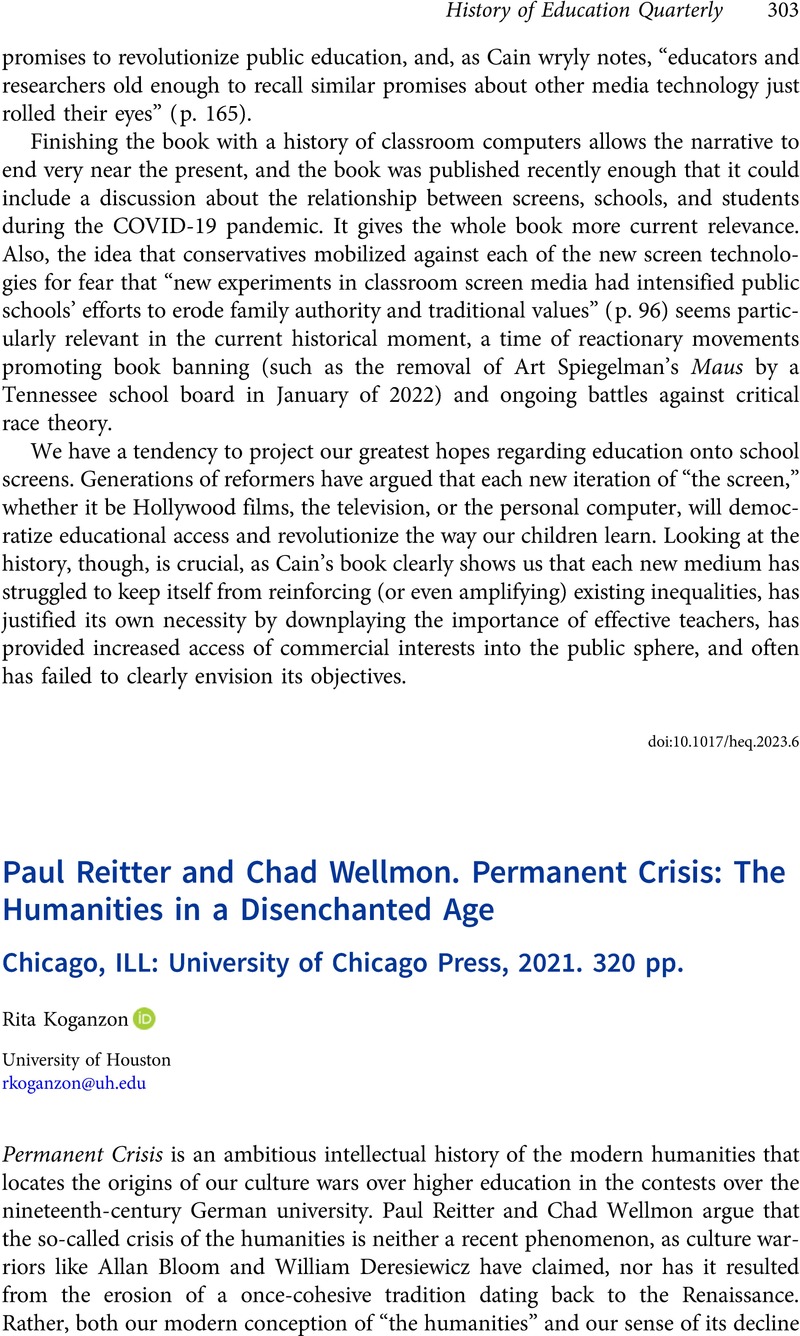No CrossRef data available.
Article contents
Paul Reitter and Chad Wellmon. Permanent Crisis: The Humanities in a Disenchanted Age Chicago, ILL: University of Chicago Press, 2021. 320 pp.
Review products
Paul Reitter and Chad Wellmon. Permanent Crisis: The Humanities in a Disenchanted Age Chicago, ILL: University of Chicago Press, 2021. 320 pp.
Published online by Cambridge University Press: 19 April 2023
Abstract
An abstract is not available for this content so a preview has been provided. Please use the Get access link above for information on how to access this content.

- Type
- Book Review
- Information
- Copyright
- Copyright © The Author(s), 2023. Published by Cambridge University Press on behalf of the History of Education Society


